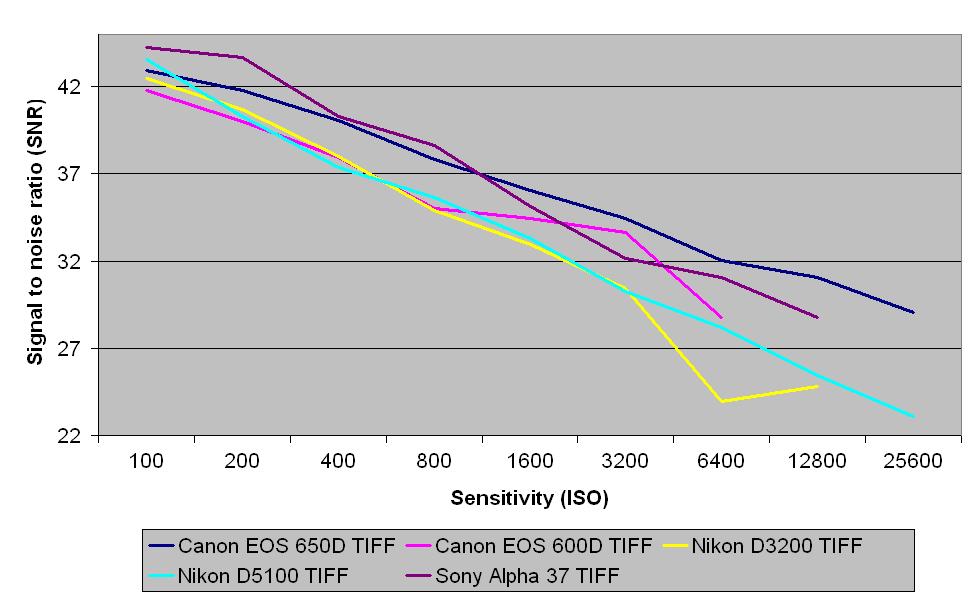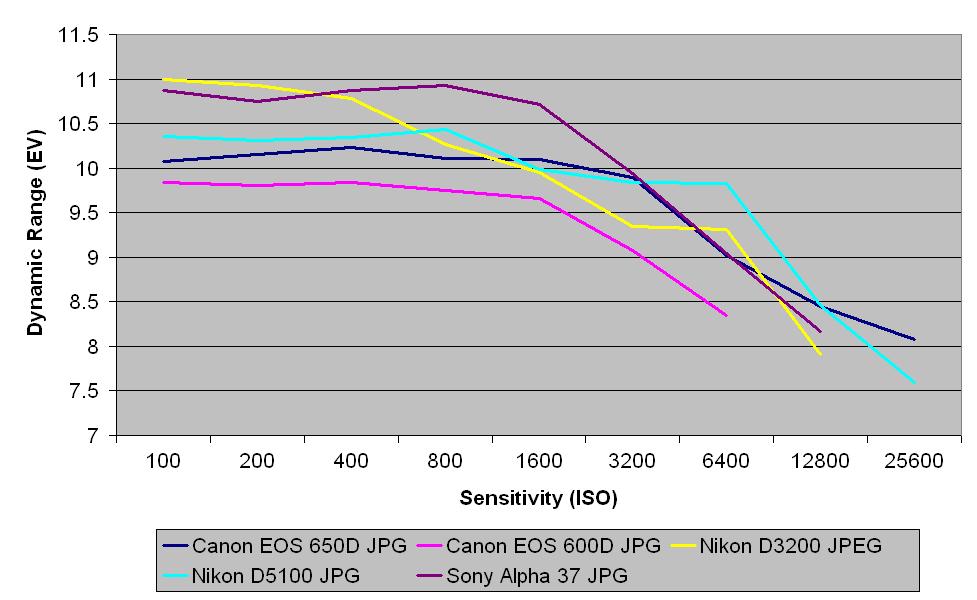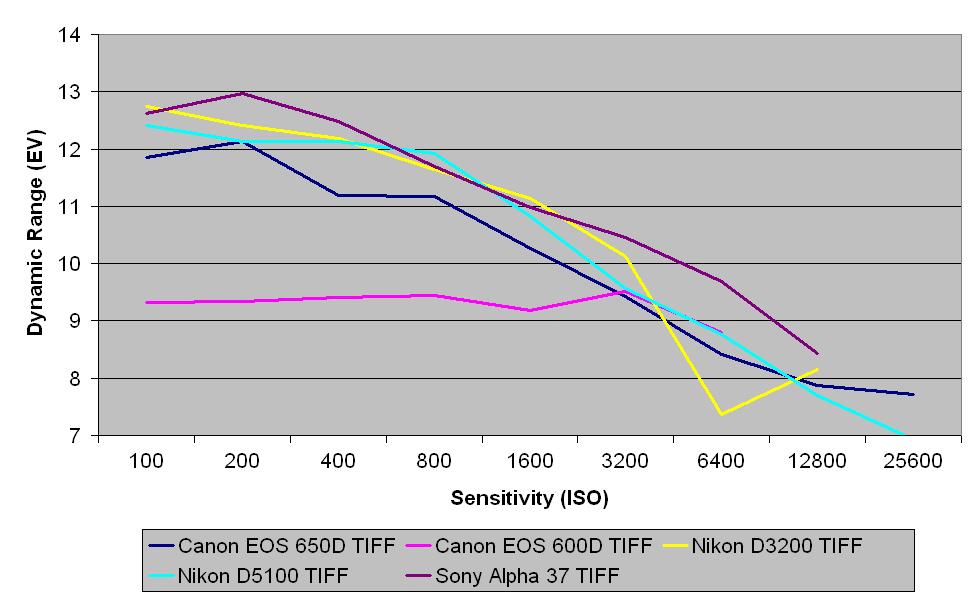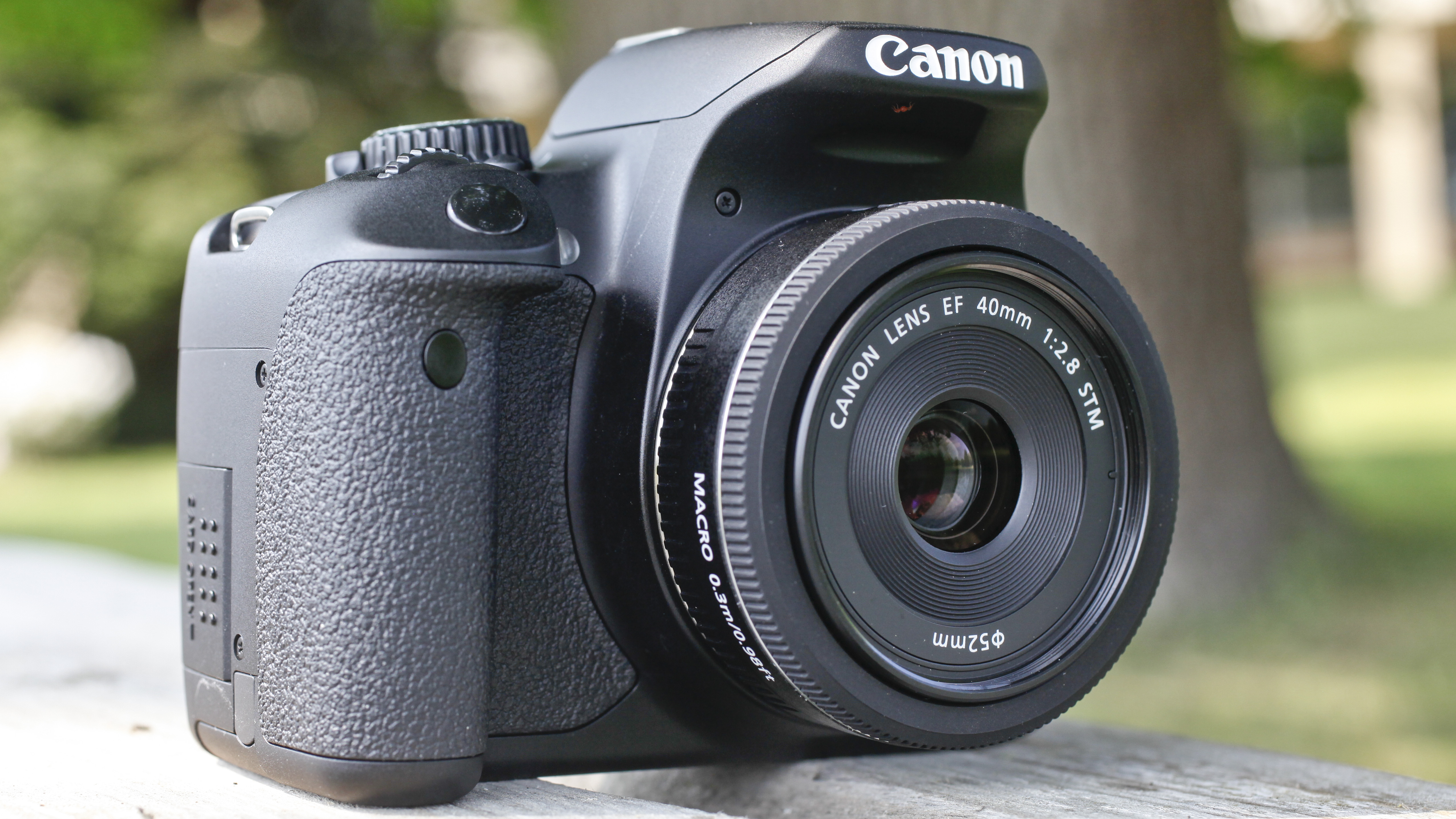Why you can trust TechRadar
We shoot a specially designed chart in carefully controlled conditions and the resulting images are analysed using DXO Analyzer software to generate the data to produce the graphs below.
A high signal to noise ratio (SNR) indicates a cleaner and better quality image.
For more more details on how to interpret our test data, check out our full explanation of our noise and dynamic range tests.
JPEG signal to noise ratio

JPEG images from the Canon EOS 650D relate closely with the Canon EOS 600D for signal to noise ratio. However from the chart you can see that the Sony Alpha 37 just has the edge over both of them.
Raw signal to noise ratio

TIFF images (after conversion from raw) from the Sony Alpha 37 and Canon EOS 650D are closely matched for their signal to noise ratio, with the Alpha 37 just having the edge at the lower end of the sensitivity scale, and the EOS 650D showing lower noise at high sensitivities.
JPEG dynamic range

Our dynamic range results show that there is an improvement in performance for JPEG images over theCanon EOS 600D, but both the Nikon D5100 and Sony Alpha 37 are capable of capturing more tonal gradation across the greater part of the sensitivity range.
Raw dynamic range

This chart indicates that TIFF images (after conversion from raw) from the 650D have a greater dynamic range than the Canon EOS 600D's images, but as with the JPEGs, they lag behind the results achieved by the Nikon D5100 and Sony Alpha 37 for the greater part of the sensitivity range.
Current page: Noise and dynamic range
Prev Page Image quality and resolution Next Page Sample images